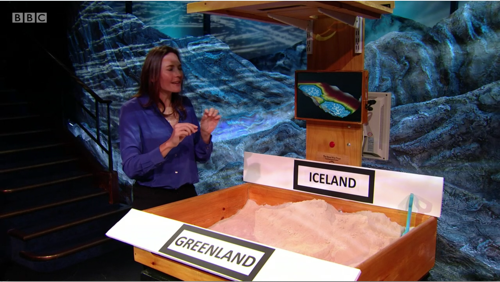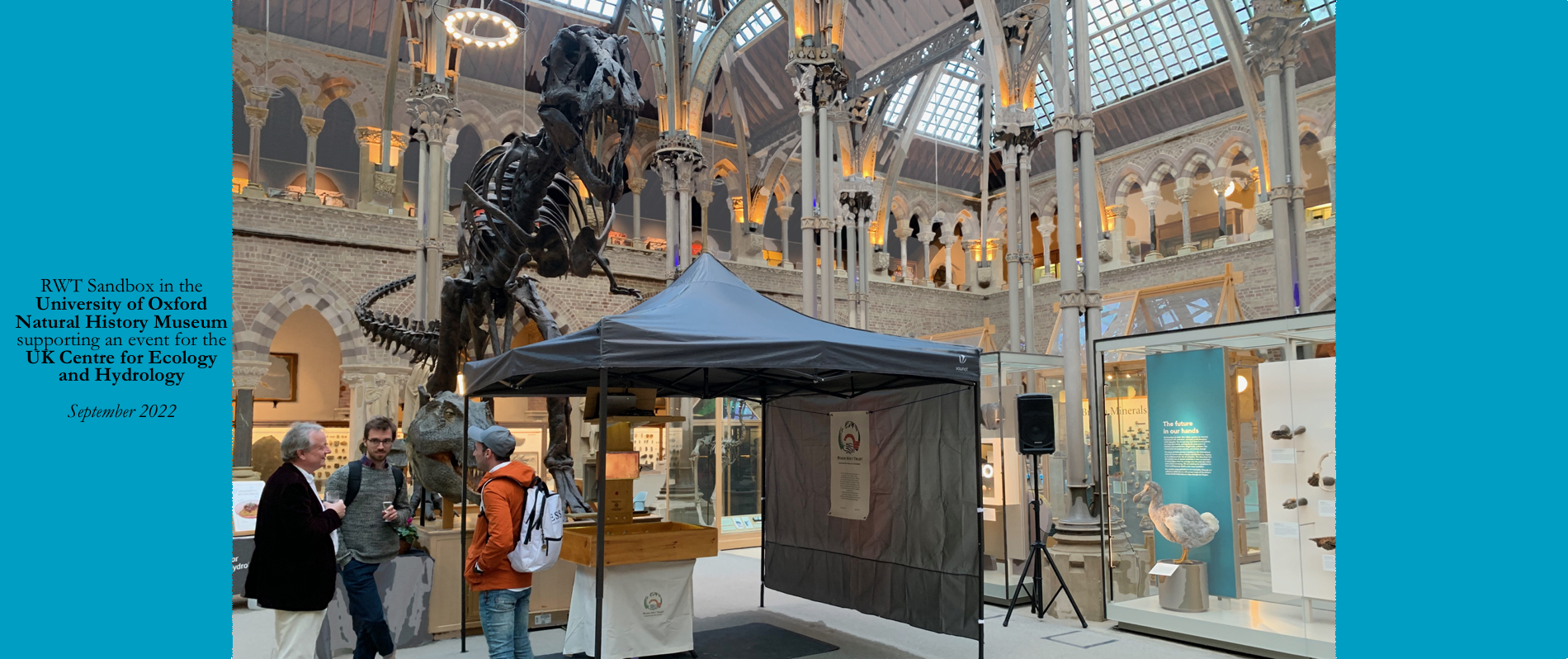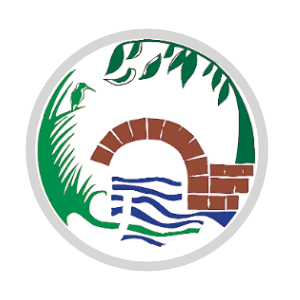Augmented Reality on the Wey
One of around 1000 registered models worldwide of which about 30 are in the UK, the Augmented Reality Sandbox uses colour and interpolated line drawing to model landscape - as on a topographic map.
How does the Augmented Reality Sandbox work?
AR Sandbox uses a computer projector and a motion sensing input device (a Microsoft Kinect 3D camera) mounted above a box of sand. When you shape the sand in the sandbox, the Kinect detects the distance to the sand below, and a visualization of an elevation model with contour lines and a colour map assigned by elevation is cast from an overhead projector onto the surface of the sand. Move the sand, and the Kinect perceives changes in the distance to the sand surface, and the projected colours and contour lines change accordingly.
You may have seen the Trust's sandbox in action on the BBC, broadcasting the Royal Institution Christmas Lectures for 2020, when Helen Czerski uses the sandbox to illustrate part of her lecture.

Using a ‘make it rain’ gesture above the surface of the sand, virtual rain appears as a blue, shimmering visualization on the surface below. The water appears to flow down the slopes to lower surfaces. The water flow simulation is based on real models of fluid dynamics (a depth integrated version of the Navier-Stokes equations).
Pressing and holding the button “Drain” dries out the virtual water.
This version of the sandbox uses a Microsoft Kinect camera, the same camera used in video games. The Kinect uses an infrared projector, camera and special microchip to track the movement of objects in 3D. This is then processed by the modelling program using a computer equipped with a powerful graphics card . The resulting image is projected onto the sand with a short-range Promethean 35 projector.
There are Information sheets and suggested Lesson Plans using the AR Sandbox available from the Resources/Downloads menu.
The RWT sandbox is one of very few (two!) portable examples in the UK, and can be set up for exhibitions, events, and in school classrooms as part of a learning programme; we were out to over 38 events in 2019 (like most things, 2020 and much of 2021 was cancelled) and have had great fun! We are now getting out and about again. 2021 saw us at two festivals, a conference, an exhibition for COP26 in Hampshire, and a few river studies days in schools, whilst 2022 has seen several schools and festivals, plus an unusual placement supporting the UK Centre for Ecology and Hydrology - under the T-Rex at Oxford University Natural History Museum.

Contact website@riverweytrust.org.uk for more information.
More about AR Sandboxes in the UK and links at https://ar-sandbox.co.uk/ and a link to the other UK based mobile AR Sandbox resource with JBA Trust who have a number of fascinating watery tools and models.
For more information, please visit https://arsandbox.ucdavis.edu.
For those interested, the computer used for our version has an Asus B250 Pro motherboard, an Intel i5 7400 7th Generation (Kaby Lake) processor, and a Palit Nvidia Geforce GTX 1070 Game Rock Graphics processor.
The Trust's version of the Sandbox has some additional features to control rain etc effects and to adjust sea level. These code elements are available from a Github repository.
